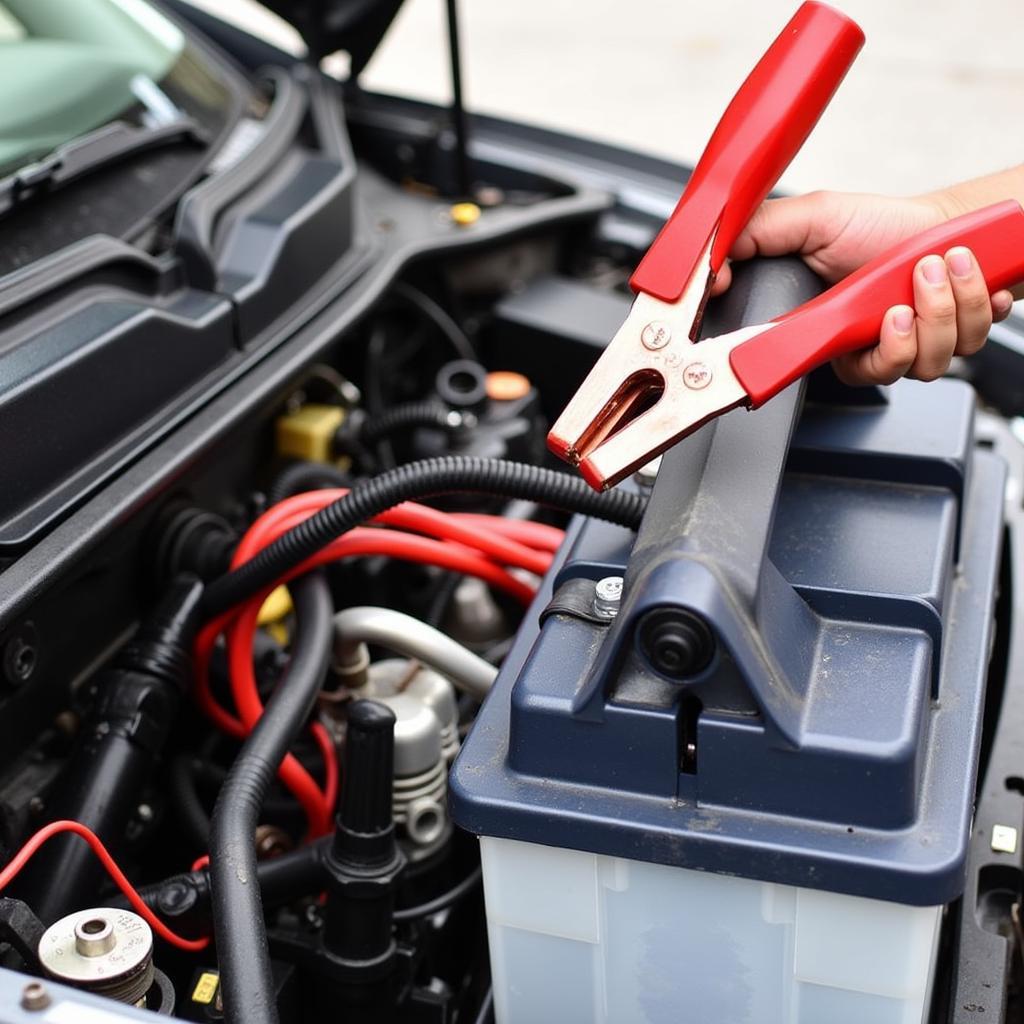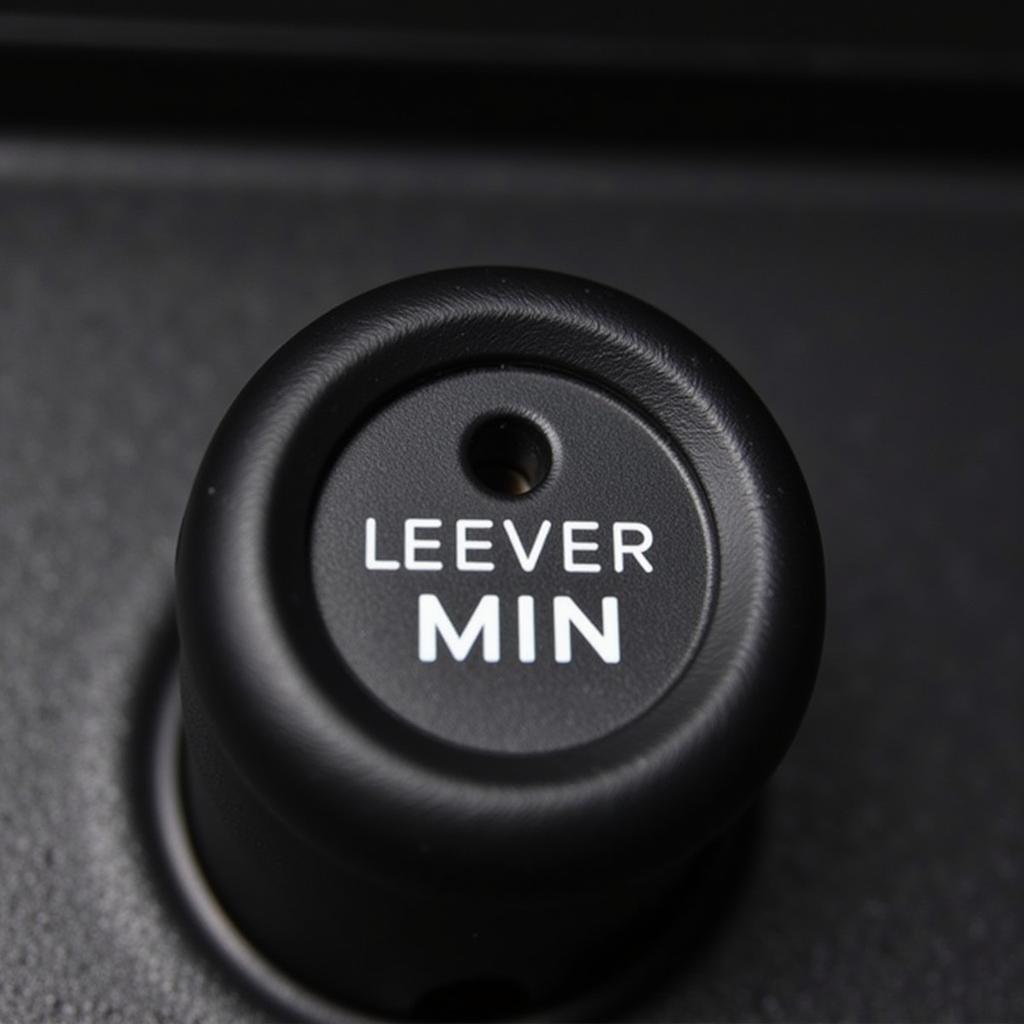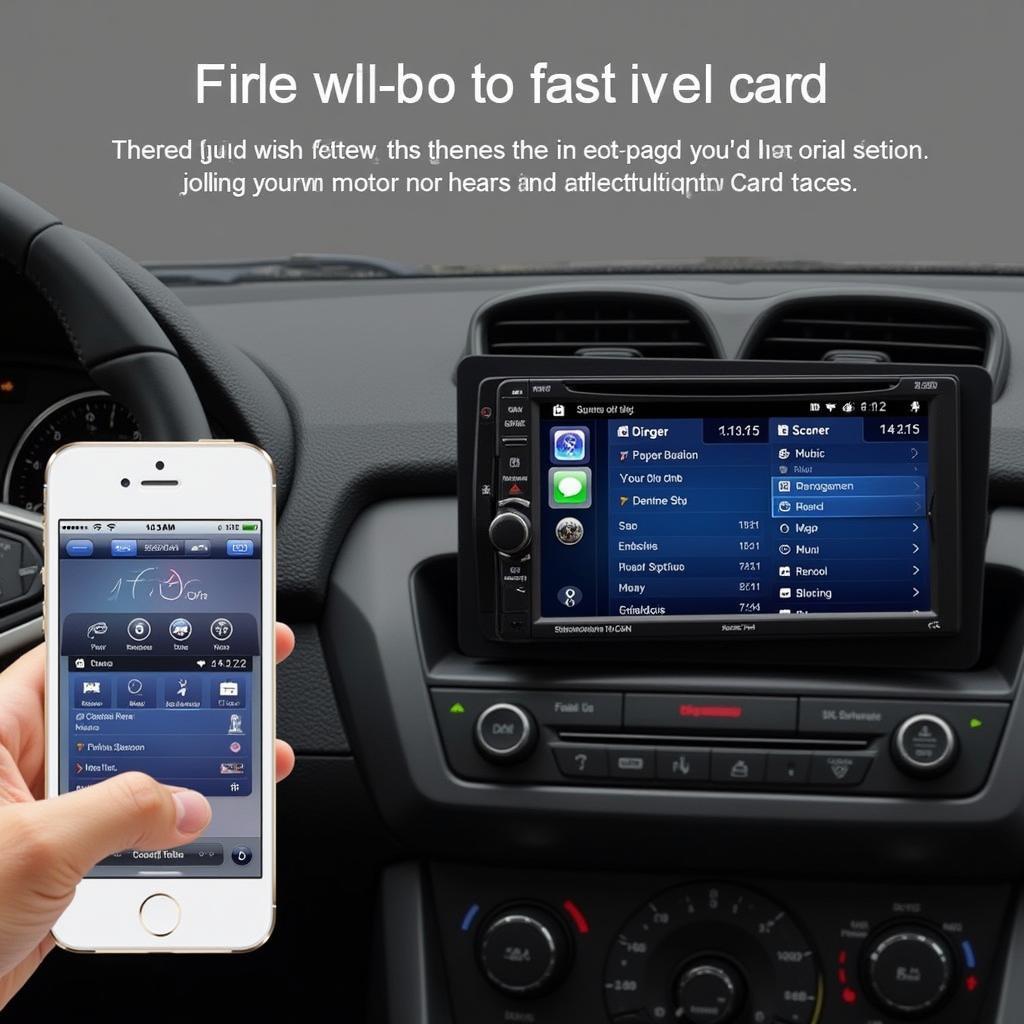Starting a car with a flat battery can be a frustrating experience. But don’t worry, with the right knowledge and tools, you can get back on the road quickly. This guide provides various methods to jump-start your car and helpful tips for preventing future battery issues.
Jump-Starting Your Car: The Most Common Solution
Jump-starting involves using a live battery from another vehicle to provide the necessary power to start your car. Here’s a step-by-step guide:
- Gather the necessary equipment: Jumper cables and a donor vehicle with a working battery.
- Position the vehicles: Park the donor vehicle close enough to your car so the jumper cables can reach both batteries, ensuring the cars aren’t touching.
- Attach the red (positive) clamp: Connect one end of the red cable to the positive (+) terminal of your dead battery. Then, connect the other end of the red cable to the positive (+) terminal of the donor battery.
- Attach the black (negative) clamp: Connect one end of the black cable to the negative (-) terminal of the donor battery. Then, connect the other end of the black cable to a clean, unpainted metal surface on your car’s engine block, away from the battery. This serves as a ground.
- Start the donor vehicle: Let the donor vehicle run for a few minutes to charge the dead battery.
- Start your car: Attempt to start your vehicle. If it doesn’t start immediately, let the donor vehicle run for a few more minutes and try again.
- Disconnect the cables: Once your car starts, disconnect the cables in the reverse order of how you connected them.
Alternative Methods: Beyond Jump-Starting
While jump-starting is the most common method, there are alternatives you can explore:
Using a Battery Charger or Booster Pack
A battery charger or booster pack can provide the necessary power to start your car without requiring another vehicle. Simply connect the charger/booster pack to your battery terminals and follow the manufacturer’s instructions.
 Using a Portable Battery Booster Pack
Using a Portable Battery Booster Pack
Push-Starting Your Car (Manual Transmission Only)
If you have a manual transmission, you can try push-starting your car. This requires getting your car rolling with some momentum and then engaging the clutch in second gear. This can be difficult and requires assistance, so it’s best used as a last resort.
Preventing a Flat Battery: Proactive Measures
Prevention is always better than cure. Here are some tips to avoid a flat battery in the future:
- Regularly check your battery’s health: Have your battery tested periodically, especially during extreme temperatures.
- Ensure proper alternator function: A malfunctioning alternator can prevent your battery from charging properly.
- Turn off all lights and accessories: Double-check that all lights, radio, and other accessories are turned off when you park.
- Limit short trips: Short trips don’t give the alternator enough time to fully recharge the battery.
- Store your car properly: If storing your car for an extended period, consider disconnecting the negative battery terminal.
“A well-maintained battery is key to a reliable vehicle,” says automotive expert, Dr. Eleanor Vance. “Regular checks and proactive measures can save you from the hassle of a flat battery.”
Why Won’t My Car Start With a Flat Battery?
A flat battery lacks the electrical power needed to engage the starter motor, which cranks the engine. Without sufficient power, the engine cannot turn over and start.
“Corrosion on battery terminals can prevent proper electrical flow,” adds Vance. “Keeping the terminals clean is a simple step that can extend your battery’s life.”
Conclusion
Starting a car with a flat battery doesn’t have to be a nightmare. By understanding the methods outlined in this guide and taking preventative measures, you can confidently handle this common car problem. Remember to prioritize safety and seek professional assistance if needed. Now you’re equipped to tackle a flat battery and get back on the road! Remember to check our guide on how to change the battery in a honda key fob if you suspect your key fob battery might also be an issue.



